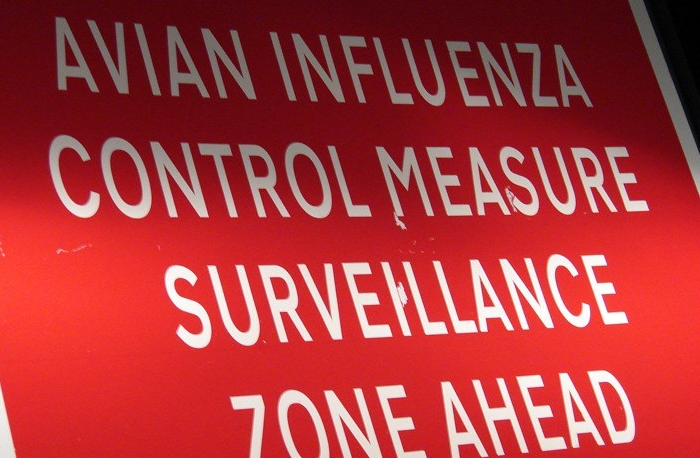H10N3 in China
On Tuesday, June 1, 2021, Beijing’s National Health Commission announced a confirmed case of the H10N3 avian influenza in a 41-year-old man. Though details are unclear as to how the man was infected, he started to display fever symptoms on April 23, was admitted to the hospital on April 28, and was diagnosed with avian influenza on May 28 [1, 2, 3]. None of the case’s close contacts showed any abnormalities while they were surveilled, suggesting that the virus has not spread beyond this isolated case [3].
In the last 40 years, the H10N3 strain was only identified about 160 times among various types of wild birds and waterfowl. Though there have been significant outbreaks of avian influenza in the past, this particular strain is considered to have low pathogenicity–meaning it causes less severe disease in birds relative to other types of avian flu–and therefore, is unlikely to cause a widespread outbreak [1,3]. This single case is significant, however, because it is the first human infection of H10N3, making this strain a zoonotic disease [1].
In a statement released after the case was confirmed, the WHO wrote, “As long as avian influenza viruses circulate in poultry, sporadic infection of avian influenza in humans is not surprising, which is a vivid reminder that the threat of an influenza pandemic is persistent” [1]. As such, the Centre for Health Protection of the Department of Health advised travellers to mainland China to avoid wet markets, poultry markets, and farms, and also to follow strict hygiene guidelines when visiting anywhere with poultry in an effort to reduce zoonotic transmission of future avian influenza strains [2].
What are zoonotic diseases?
Zoonotic diseases are caused when germs spread from animals to humans. These can include a variety of diseases, such as viruses, bacteria, parasites, and fungi. These germs are an important focus for scientists, as estimates indicate that more than 60% of infectious diseases in humans originated in animals. Even more alarming, 75% of new infectious diseases in humans are zoonotic [4]. As a result, global monitoring and control of zoonotic diseases has the potential for a significant impact.
How does zoonotic transmission occur?
Animals can pass diseases to humans in a variety of ways. These include through direct contact (e.g., contact with an infected animal or body fluids of an infected animal), indirect contact (e.g., contact with contaminated surfaces). Additionally, they can spread through vector-borne (e.g., getting bit by animals, such as ticks or mosquitoes), foodborne, and waterborne transmission. While Zoonotic diseases can affect anybody, young children, adults over 65, immunocompromised individuals, and pregnant women are at higher risk of contracting a zoonotic disease [4].
Famous zoonotic disease outbreaks
Several major zoonotic disease outbreaks have occurred throughout history. These include the H1N1 influenza outbreak of 1918, in which 50 million people died. The Bubonic Plague (otherwise known as the Black Death) originated in animals, though there is now some contention as to whether the plague was caused by rat-borne fleas or human parasites [5, 6]. Ebola, Lyme disease, and even HIV have been traced to animals as well. Most recently, the novel coronavirus is linked to bats through a seafood market in Wuhan, China. To date, COVID-19 has infected more than 170 million people worldwide and killed over 3.5 million. These metrics illustrate how zoonotic diseases are capable of significant human spread.
Why worry?
Zoonotically transmitted diseases have the potential to cause massive global outbreaks. Known zoonotic diseases of the highest concern include West Nile virus, SARS, MERS, and rabies, all of which have the potential for large human outbreaks [7]. Zoonotic germs are particularly scary in that there is an ever present threat of new, unknown diseases passing to humans. As seen with COVID-19, it takes months to even identify the presence of a new strain and much longer to develop, test, and distribute a vaccine [8].
Fortunately, developments in the public health realm are helping create a new era in the fight against zoonotic disease. The CDC’s OneHealth strategy works to create a comprehensive approach to zoonotic public health, while recent innovations such as the HealthMap* and OutbreakNearMe** disease trackers are increasing public awareness of disease. Hopefully, these recent advances will vastly enhance the global ability for a swift and adept response to the next zoonotic outbreak [7, 8].
**https://outbreaksnearme.org/us/en-US/
Resources
- https://www.reuters.com/article/health-birdflu-china/update-1-china-reports-first-human-case-of-h10n3-bird-flu-idUSL2N2NJ065
- https://www.info.gov.hk/gia/general/202106/01/P2021060100875.htm?fontSize=1
- https://www.washingtonpost.com/world/2021/06/01/china-bird-flu-h10n3/
- https://www.sciencedirect.com/science/article/pii/S0147957108000088?casa_token=wmg5V0ro0uQAAAAA:5-jEE94NdFkZfjZTSkP0q_6qozcGWlaY52oWPnVxNee5M0jJcG41A9bmiHkdgqChmEm5qC4
- https://www.cdc.gov/onehealth/basics/zoonotic-diseases.html
- https://www.livescience.com/12951-10-infectious-diseases-ebola-plague-influenza.html
- https://www.bbc.com/news/science-environment-42690577
- https://www.cdc.gov/media/releases/2019/s0506-zoonotic-diseases-shared.html
- https://www.nature.com/articles/d41586-020-03626-1


